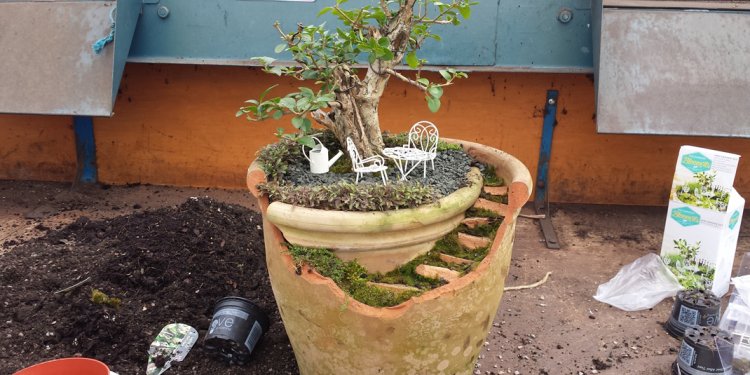
Garden Furniture and Accessories
If you have a few pieces of old, wooden furniture lying around, you can turn them into beautiful pieces for your garden or patio with just a few coats of paint. A brightly colored bench or stool is perfect for reading under a tree, but you can use the techniques in the gallery to paint any wooden furniture including shelves and cabinets for storing gardening supplies. With a little bit of work and a small budget you can have a whole new piece of outdoor furniture.
Supplies
Here's what you need to refurbish furniture for outdoor use: sturdy wooden furniture / paint brushes and/or a paint roller / sand paper and an electric sander / a soft, clean cloth / painter's tape / a drop cloth / exterior latex based primer and paint, a pint is usually enough to cover an average sized piece of furniture.
Choosing Furniture
You may have some old benches or other furniture lying around that you want to repaint for use outdoors, or you may want to buy something to use. Either way, be sure your piece of furniture is sturdy. If a bench is falling apart at the seams, a new coat of paint won't help, but as long as the furniture is structurally sound you can turn even the most worn out pieces into something beautiful.
Initial Sanding
Before you start priming and painting, you will need to prep the surface of your furniture by sanding it. If there is any varnish on the surface of the wood you need to sand it until the shine is gone, but you don't have to strip it down to the bare wood unless you want to. If you don't have an electric sander you can sand by hand, it will just take much longer.
Wipe Clean
Once you've sanded the entire surface, use a cloth to wipe away all of the dust. You may want to use a damp cloth in the crevices to be sure you've removed all the sanding residue.
Priming
Now that your surface is sanded and clean, it's time to prime. Choose a quality exterior latex primer in a dark color if you are using dark paints, and a light color if you are using light paints. Although it can be tempting to skip this step and go right to painting, if you don't prime your furniture the paint will go on blotchy and will chip off easily later.
Don't Forget The Underside!
When you are painting furniture that will be outside, you need to be sure you cover the entire surface with primer and paint. This means that when the top is primed and dry, flip your bench upside down and prime the underside. Seal every inch of exposed wood, even if you'll never see it when the bench is upright.
Touch Up Sanding
Once your primer is completely dry, give your furniture another quick sanding. It's best to do this sanding by hand so you don't remove the primer. Your goal is is to smooth down any little splinters that may have popped up during priming.
Paint!
Now that your primer is on, dry and sanded, you are finally ready for painting. You can use a roller to cover large areas quickly and touch up smaller areas with a brush. Just like with the primer, be sure to cover the entire surface with paint. Let the first coat of paint dry for at least 6 hours and apply a second coat to be sure your furniture is completely sealed.
Adding Stripes
If you'd like to add stripes to your bench, wait at least a day for your first layer of paint to dry. Then use painter's tape to mark off stripes on the surface of your bench. Use two different sizes of tape to get a variety of stripes, or stick with one tape width and measure carefully for perfectly uniform stripes.
Finished Stripes
Once you've painted your stripes, pull the tape off immediately. You don't need to wait for the paint to fully dry before removing the tape as long as you peel it off gently. The sooner you remove the tape, the less likely it is to pull up the paint underneath. Touch up any spots if necessary and let the paint dry. Then your bench is ready to use.
Adding Leaves
If you'd like a more organic feel, skip the stripes and paint some flowers on your bench. Begin with a layer of leaves to create a nice base for the flowers. Choose a dark green paint and light green or yellow paint and mix them to create a bit of depth to your leaves.
Adding Flowers
Choose a color for your flowers and use a dark shade a light shade. We used dark and light pink. Blend the colors in your brush and paint short, thick strokes in a spiral shape. Let your strokes get thicker and longer as you go outward to create the illusion of a rose. Try to vary the sizes of your flowers a little, and create little buds around the edges for added interest.
Finishing Touches
Add any highlights you'd like with a small brush to finish. Consider adding a few yellow dots to the centers of your flowers, and sprinkle a few over the bench as finishing touches.
Finished Floral Bench
Once the paint is dry, your bench is ready for its place in the garden or on the patio. To keep your benches looking their best, keep them out of direct sunlight and rain. If your bench must be in a place where water tends to gather, raise it up off the ground with a couple of large paving stones to keep the wood from warping. Repaint every two years to keep the wood strong and sealed.

















